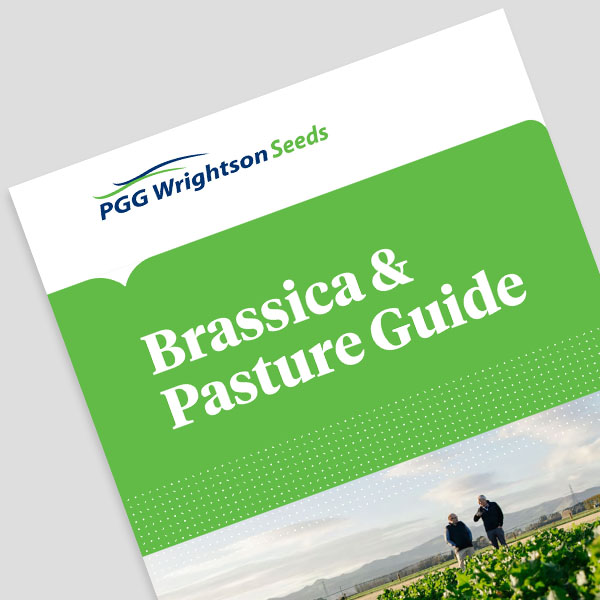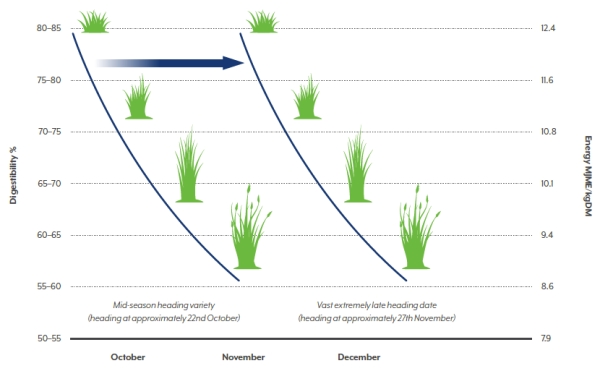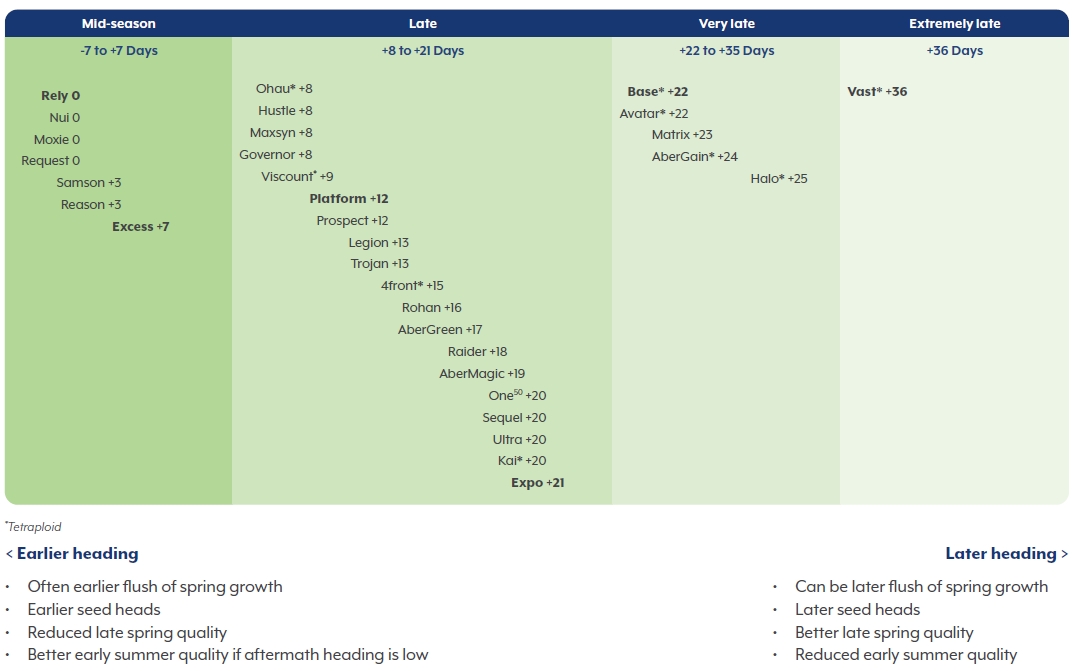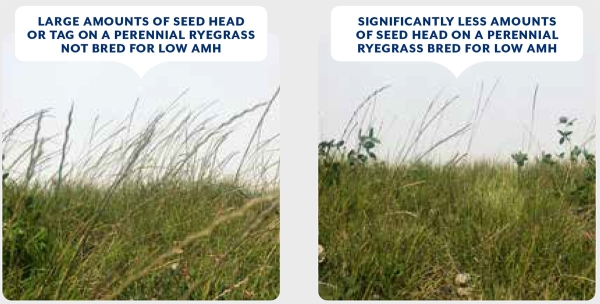Understanding heading dates
Consider the heading date as an indicator of when seed head development and the late spring decline in pasture quality will occur.
A cultivars heading or maturity date is the time in spring when 50% of plants have emerged seed heads in a typical year. Heading date precedes flowering date by about four weeks.The heading date of a cultivar is defined relative to well-known cultivar Nui, heading at day zero. Cultivars with different heading dates give farmers a range of production and forage quality options during late winter, spring and early summer.
Until recently, heading dates of perennial ryegrass cultivars were similar. Now, perennial and long rotation ryegrasses with a wide range of heading dates are available A standardised system adopted by the major seed companies allows farmers to compare heading dates of different cultivars. Actual heading dates vary with geographic location, weather and grazing management; however, the ranking order of cultivars will not change.
Heading date |
Days relative to Nui (approximatley 22nd October) |
| Nui | 0 |
| Mid-season | -7 to +7 |
| Late | +8 to +21 |
| Very late | +22 to +35 |
| Extremely late | +36 |
Effects of Heading Date on Pasture Production
A mid-season heading grass such as Rely (0 days) typically provides greater early spring growth, resulting in a ‘spring flush’ of feed in the 6 weeks prior to seed head emergence. Late, very late, and extremely late heading cultivars will provide a later spring flush of feed relative to mid-season cultivars.
Delaying the late spring/early summer loss of feed quality
Extremely late heading cultivars such as Vast (+36 days after Nui) are the last to enter their reproductive phase and production of seed heads if left un-grazed. The advantage of very late and extremely late heading date cultivars is that they continue to produce high quality feed into later spring. In some instances extremely late heading cultivars will maintain quality for over a month longer than earlier ‘mid-season’ heading date cultivars.
Effects of heading dates on pasture quality
Planting part of the farm in extremely late heading cultivars delays the crash in pasture quality by up to 36 days later than mid-season cultivars.
Key recommendations
- Sow a range of early and very late/extremely late heading ryegrass cultivars to spread timing of heading and reduce loss of summer pasture quality
- Sow ryegrasses with different heading dates in separate paddocks to maintain a uniform heading date in individual paddocks and assist with strategic timing of grazing or mowing to control seed heads
- Sow no more than 50% of the farm in very late or extremely late heading cultivars to reduce early spring feed pinches
Heading date continumm
Approximate heading dates of long-rotation and perennial ryegrasses relative to Nui at day 0. The heading date of Nui ryegrass is approximately 22nd October.
Aftermath heading (AMH)
Aftermath heading (AMH) is to the ongoing production of seed heads during the summer following the main spring flush. While the main spring flush is critical for seed production, continued production of seed heads through the summer months has a negative impact on pasture quality and therefore animal performance.
PGG Wrightson Seeds’ plant breeding team put a larger emphasis on selecting ryegrass varieties with low levels of seed head production through the summer months. When choosing a ryegrass variety it’s important to select a variety that is truly bred for low AMH as this will have significant positive impacts on summer pasture quality.
The photos demonstrate the differences in cultivar AMH between two cultivars, one bred by PGG Wrightson Seeds with selection for low AMH versus a competitor product displaying significant production of seed heads during the summer months.
Tip
Choose cultivars such as Platform or Vast with low AMH to deliver a short, sharp peak of seed heads, followed by a leafy, high quality sward that favours good animal performance.




